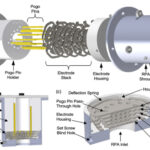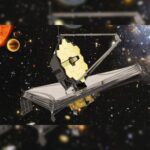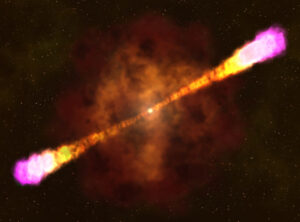
Asteroids collided with the earth to produce shock waves that create materials with a variety of complex carbon structures. According to a study led by researchers at the University College London and Hungarian scientists, these materials can be used to advance technical applications in the future.
Scientists have found that the diamonds formed during high -energy shock waves resulting from the Asteroid collision 50,000 years ago have unique and extraordinary properties. The diamonds are unique because they are formed by short -term high temperatures and extreme pressure. The study described the new findings -this was published in the Proceedings of the National Academy of Sciences.
What is this diamond used for?
According to the researchers, the structure can be used for mechanical and sophisticated electronic applications. They can be used to design materials that are not only ultra-hard but can also be forged with melodious electronic properties. Soft substances are substances that can be easily converted into new forms.
What is Lonsdaleite?
The international scientist team used a sophisticated crystallographic and spectroscopy examination of Lonsdaleite minerals from Canyon Diablo Iron Meteorite. Lonsdaleite is also known as hexagonal diamonds referring to the crystal structure, and is a substance that is stronger and more stiff than diamonds. Iron Canyon Meteorite Diablo was first discovered in 1891 in the Arizona Desert.
Lonsdaleite was named after British crystallographic Pioneer Professor Dame Kathleen Lonsdale, first female professor at the University College London.
Previously, Lonsdaleite was considered to consist of pure hexagonal diamonds. This makes it different from the classic cube diamond. The researchers later found that Lonsdaleite consisted of intergrowths with structured and graphene diamonds, the term used to refer to two minerals in crystals that grew together. Diamond intergrowth and like graphene-nano in Lonsdaleite is called a diafit. The researchers identified errors, or “errors” in the order of recurring patterns of the atomic layer.
Why is this research important?
In a statement released by University College London, Dr. Péter Németh, the main writer on paper, said through the recognition of various types of intergrowth between the graphene and diamond structure, people can be closer to understanding the conditions of pressure temperature that occurred during the asteroid impact.
According to research, the distance between the graphene layer was found unusual because the unique environment of carbon atoms that occur in the interface between diamonds and graphene. The researchers showed that the diafit structure was responsible for the spectroscopy features that were previously unresolved (related to the structure of atoms and molecules).
Chris Howard, a colleague of the author on paper, said this is very interesting because the researchers can now detect the structure of the diafit in diamonds using a simple spectroscopic technique without the need for an expensive and tiring electron microscope. Spectroscopy is used as a tool to study the structure of atoms and molecules.
Structural and complexity units reported in Lonsdaleite samples can occur in various other carbon materials formed by shock and static compression or by deposition of the steam phase, according to scientists. Deposition of Steam Phase is a process in which a material transition from a condensed phase to the steam phase and then returns to the thin film condensation phase.
In that statement, Professor Christoph Salzmann of University College London said that the discovery had opened a door for new carbon materials with attractive mechanical and electronic properties that could cause new applications ranging from abrasive and electronic to nanomedis and laser technology.



![Scientists are turning dead spiders into robots, the tech is called ‘necrobotics’ [WATCH]](https://highonwing.com/wp-content/uploads/2022/07/93155021-150x150.webp)


Average Rating